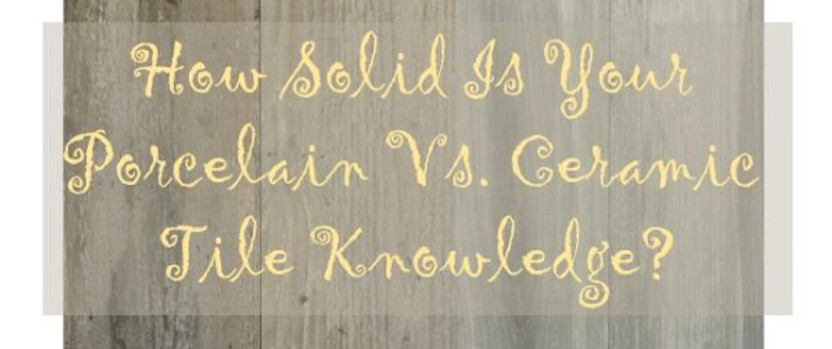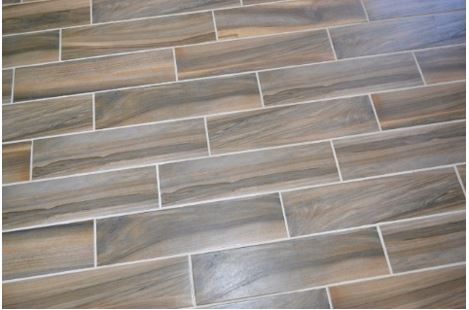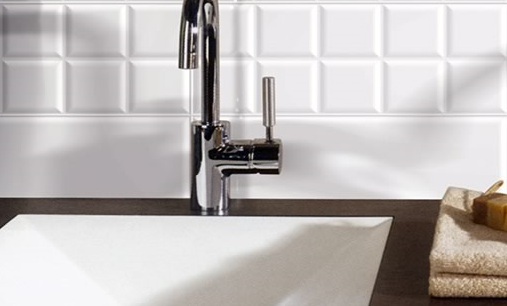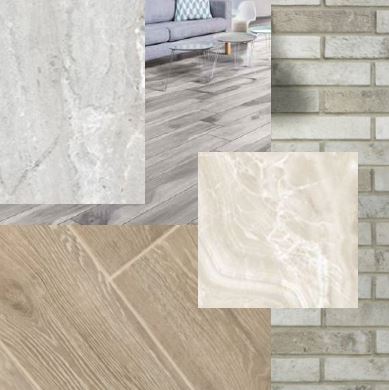How Solid Is Your Porcelain vs. Ceramic Tile Knowledge?
Posted by Kate Spencer on Apr 24th 2024
How's your porcelain vs. ceramic tile knowledge? Do you know the difference between the two?
If you don't, you're not alone. It's a question that comes up frequently during the tile shopping process.
Let's explore since it can get confusing and the right product to choose will depend on what you are trying to create with tile.
Porcelain vs. Ceramic Tile: What's the Difference?
The best way to go about this and test your knowledge is through questions. We'll start out with what's similar, then discuss what's different, and what this information means for your shopping decisions.
After that, the fun begins with a series of true/false questions. Ready? Here goes.
What is similar between porcelain and ceramic tile?
The ceramic tiles and porcelain tiles you will find at Tile Outlets of America are similarly made from clay and baked or fired in a kiln (aka a big oven) at high temperatures. As such, they both fall into the ceramic category. Yes, porcelain tile is a ceramic tile; however, a ceramic tile is not a porcelain tile.
As Porcelain Tile & Ceramic Tile FAQ explains,
"Most types of tiles that are made from clay or a mixture of clay and other materials, then kiln-fired, are considered to be a part of the larger classification called “Ceramic Tiles”. These tiles can be split into two groups, porcelain tiles and non-porcelain tiles. These non-porcelain tiles are frequently referred to as ceramic tiles by themselves, separate from porcelain tiles."
What's the biggest difference between porcelain and ceramic tile? Vitrification.
Porcelain tile is made from porcelain clay which includes kaolin. It is fired at a very high temperature between 1,200 and 1,400 °C (2,200 and 2,600 °F)which results in vitrification. That's what makes porcelain tile more impermeable to water than ceramic (i.e., non-porcelain) tile even without being glazed.
Ceramic tile, on the other hand, tends to be manufactured from white or red clays which may also include other natural materials. It is fired at a lower temperature (~900°C).
As Ceramic Tile vs Porcelain Tile explains,
"Ceramic tile is a mixture of clays and other natural materials. The special clays are mined from the earth, shaped, colored and than fired in kilns. Traditional ceramic tile can be naturally colored and left unglazed like terra cotta, or they can feature colored or highly designed surfaces which can be glazed (finished with a glass surface) either in a high gloss or matte finish. Most ceramic tile has either a white or red body coloration underneath the glazed, colored top layer."
The glaze adds durability as well as color and pattern to ceramic tile.
Since there is so much confusion in the marketplace about the difference between ceramic tile and porcelain tile, two organizations came together in 2007 to certify porcelain tile. According to the Tile Council of North America (TCNA),
"Porcelain tile is defined as an impervious tile with a water absorption of 0.5% or less as measured by the ASTM C373 test method."
What does this mean for selecting porcelain vs. ceramic tile?
Because porcelain tile has a low water absorption rate (less than 0.5%), it is generally considered an excellent flooring choice for indoor and even outdoor installations where frost might be a concern.
Glazed ceramic tile is recommended for indoor use primarily where freezing isn't an issue. It is an excellent wall choice. Softer and easier to cut than porcelain tile (of interest if you are a DIY-er), ceramic tile is also a beautiful floor tile choice - when it is designated as a floor tile.
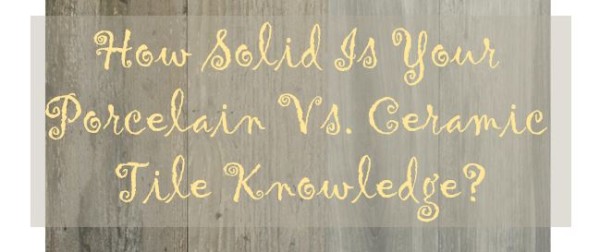
How solid is your porcelain vs. ceramic tile knowledge?
With all that explained, let's test your knowledge! How would you answer the following 11 True/False questions?
Porcelain tiles are fired at a higher temperature than ceramic tiles. True/False
Porcelain tiles are harder and denser than ceramic tiles. True/False
Ceramic and porcelain tiles have different thicknesses. True/False
The thickness of the tile determines the strength of the tile. True/False
The glaze on ceramic and porcelain tile is ground glass. True/False
The glaze on a ceramic tile is the same as on a porcelain tile. True/False
A porcelain tile can be unglazed. True/False
Ceramic wall tiles can only be used on walls. True/False
Ceramic tile can be used outdoors. True/False
Ceramic tiles can be red or white clay. True/False
Inkjet process prints the design on the tile before firing. True/False
And the answers...
Porcelain tiles are fired at a higher temperature than ceramic tiles.
True
Porcelain tiles are harder and denser than ceramic tiles.
True
Porcelain tiles are composed of fine porcelain clays and fired at much higher temperatures than ceramic tiles.
This process makes porcelain tile more dense, less porous, much harder and less prone to moisture and stain absorption than ceramic tiles. For this reason, most porcelain tiles are suitable for both indoor and outdoor installations.
Porcelain tiles are also harder to cut due to their density and hardness.
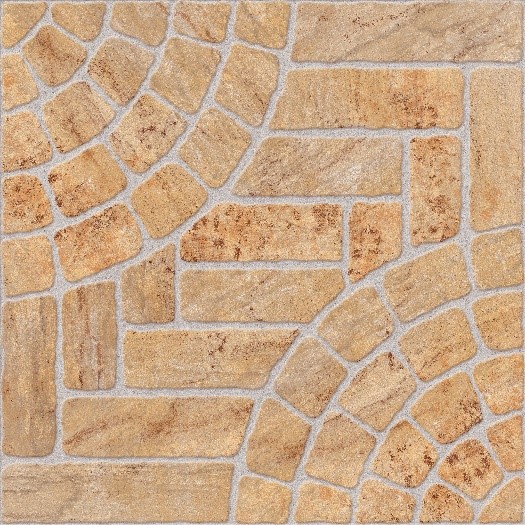
Ceramic and porcelain tiles have different thicknesses.
True
Tile thickness varies on products. Tiles can be 3mm to 11 mm in thickness.
Some ceramic wall tiles are thinner in bisque while there are porcelain tiles that are pressed at a 7 mm thickness with the same wear ratings as a 10 mm product.
The thickness of the tile doesn’t determine the strength of the tile.
True
- Water absorption percentage measures the density and hardness of the clay and is the best way to determine the tile's ability to resist thermal expansion, its structural strength, its ability to resist impacts, and the tile’s breaking strength. The test is performed by measuring the amount of water that will be absorbed by the tile during a test using a vacuum to saturate the interior of the tile. Tiles are weighed before and after the test. If the tile increases in weight by 4% the absorption rates are equal to 4%.
- The resistance to breakage by impact is determined by the MOHS scale that goes from 1 (chalk) to 10 ( diamond ). Many ceramic or red body tiles are rated at 7 to 9, the same exact resistance as any other glazed porcelain in the market.
The glaze on ceramic and porcelain tile is ground glass.
True
Glaze is most easily described as glass that is ground, processed and fired at a temperature that makes it flow and bond to the clay body as it fires to its potential hardness.
Glaze is applied by various methods, spray, waterfall, and dry spread.
The glaze used on a ceramic tile is the same as what is used on a porcelain tile.
True
In most ceramic factories, the same glazes are used for glazing porcelain and ceramic tiles.
A porcelain tile can be unglazed.
True
Unglazed porcelain tile is typically used in heavy commercial projects. These are expensive products because the clay body needs to be very pure and free from imperfections.
The end result is an all-the-way through or true body porcelain which is basically manufactured by mixing, among other components, feldspar, white clay, silica, and sand, then pressing and firing at over 1200 °C with no glaze. The wear factor is almost none as there is no glaze to wear off.
Ceramic wall tiles can only be used on walls.
True
Glazed ceramic wall tiles vary greatly in size and are for interior use only. Wall tile is generally made of soft bisque (body) and is not expected to withstand heavy impact or breaking requirements.
This type of tile is intended for wall and countertop usage only. Wall tiles are not designed, nor are they expected to, to hold up to traffic. Therefore, wear ratings will not apply.
Ceramic tile can be used outdoors in Florida.
True
- Porcelain tile has a water absorption of less than 0.5%, which means that it can be installed outside in areas where the temperatures go from over 100 degrees in the summer to under 32 degrees in the winter. By absorbing almost no humidity, the tiles will not crack under the constant expansion and contraction of the underlayment whereas ceramic tile will.
- However, in places like Florida where it is rare to have freezing temperatures, this characteristic becomes an overkill. You can install red body ceramic tiles with less than 6% of water absorption outdoors in the State of Florida and in most Southern States.
Ceramic tiles can be red or white clay.
True
Ceramic tile is a mixture of clay and other natural materials. These special clays are mined from the earth, shaped, colored and then fired in kilns.
Traditional ceramic tiles can be naturally colored and left unglazed (e.g., terra cotta), or they can feature colored or highly designed surfaces that can be glazed either in a high gloss or matte finish. Most ceramic tile has either a white or red body coloration underneath the glazed, colored top layer.
The inkjet process prints the design on the tile before firing.
True
Tiles are printed with colors and patterns (e.g., wood-look planks) just like an inkjet printer and sprayed with glaze before firing. The ink cartridges are just like the cartridges you put in your home printer.
>> See How Inkjet Technology Has Transformed Ceramic and Porcelain Tile
How is Your Porcelain vs. Ceramic Tile Knowledge?
So, how did you do? How solid is your porcelain vs. ceramic tile knowledge? Let me know.
And be sure to check out the beautiful ceramic tile and porcelain tile selections available at all three Tile Outlets of America stores!
Thanks for reading,
Kate
Note: We originally published this article on Nov 19, 2015 and have updated it.


